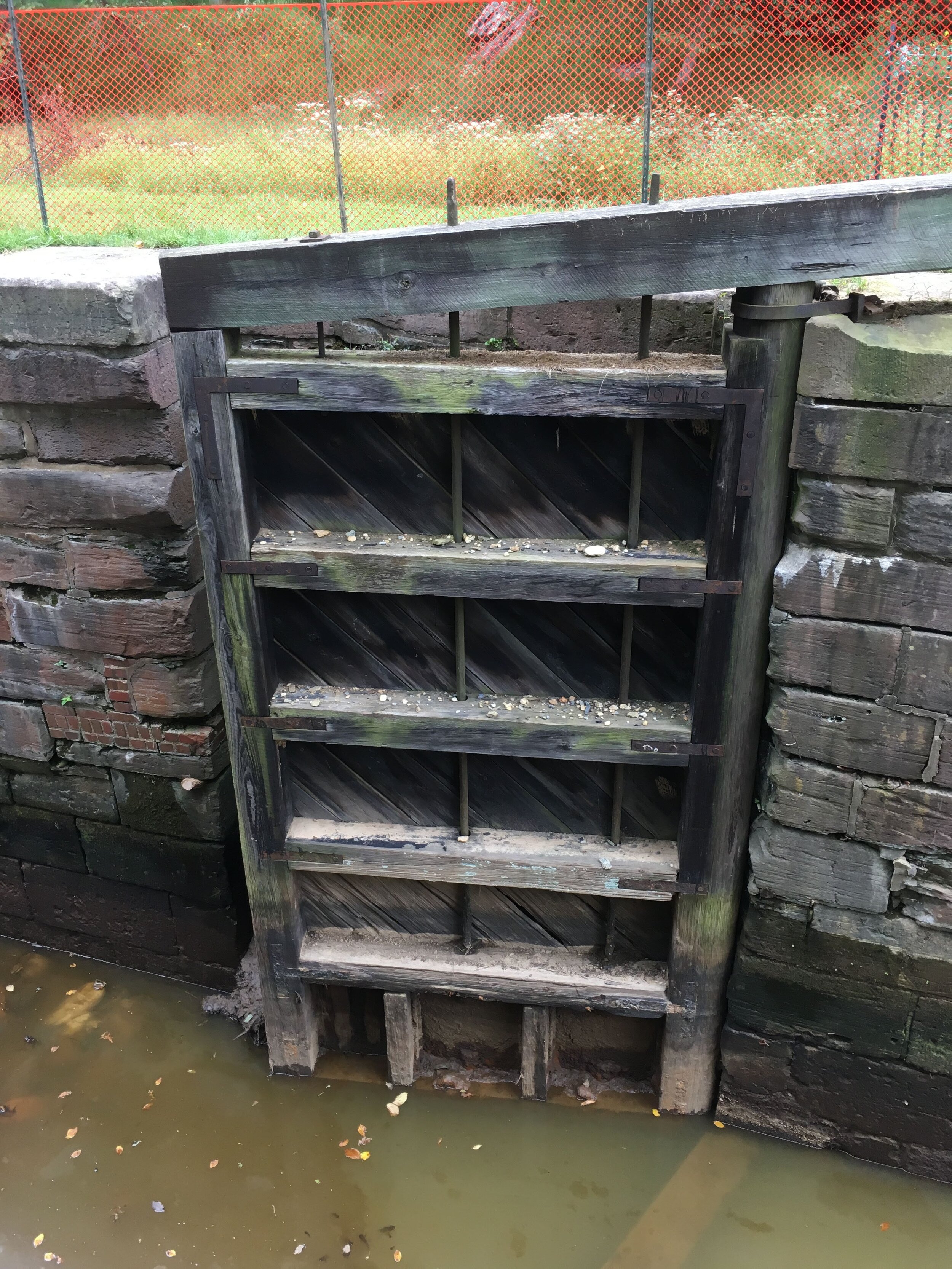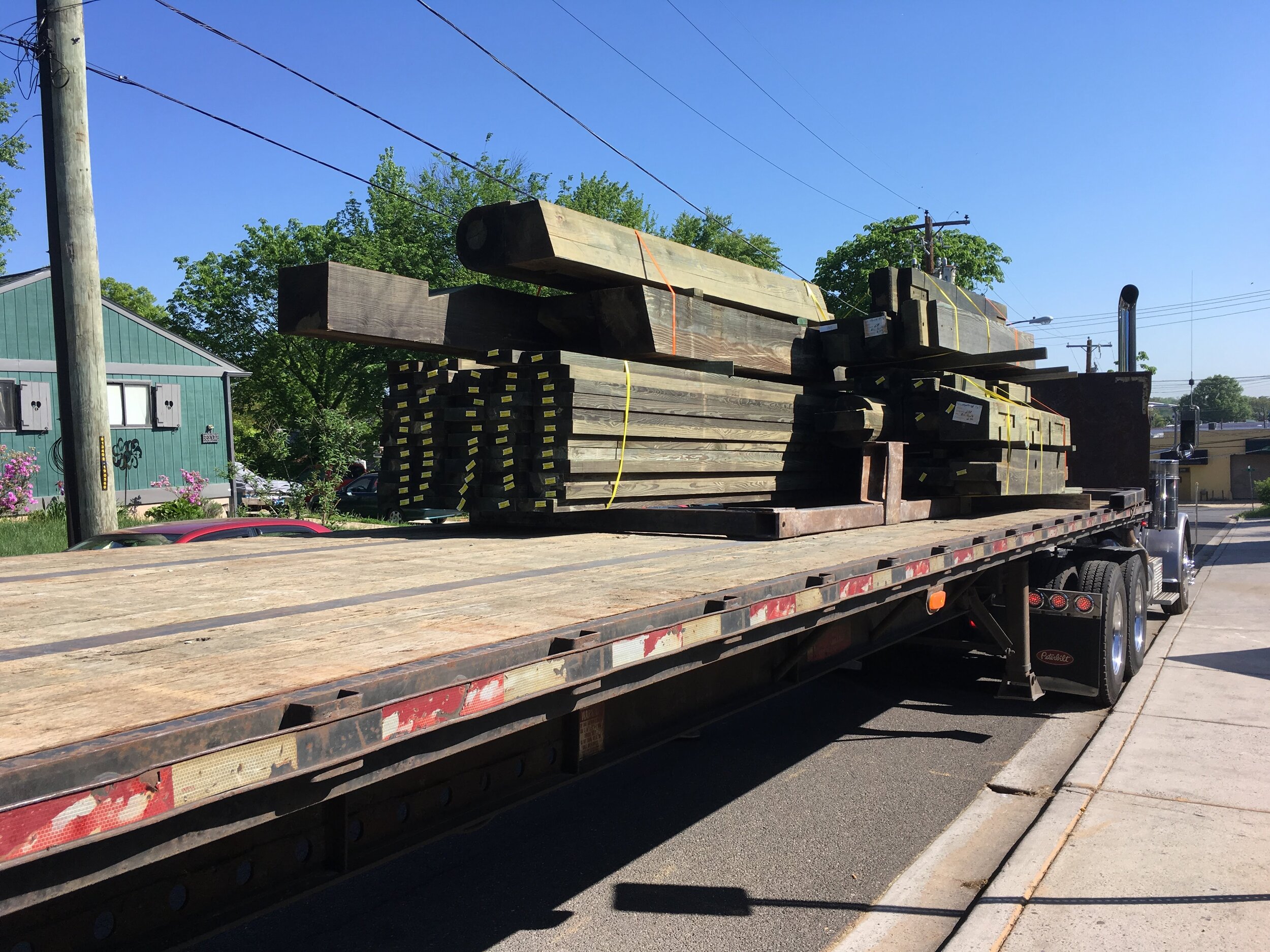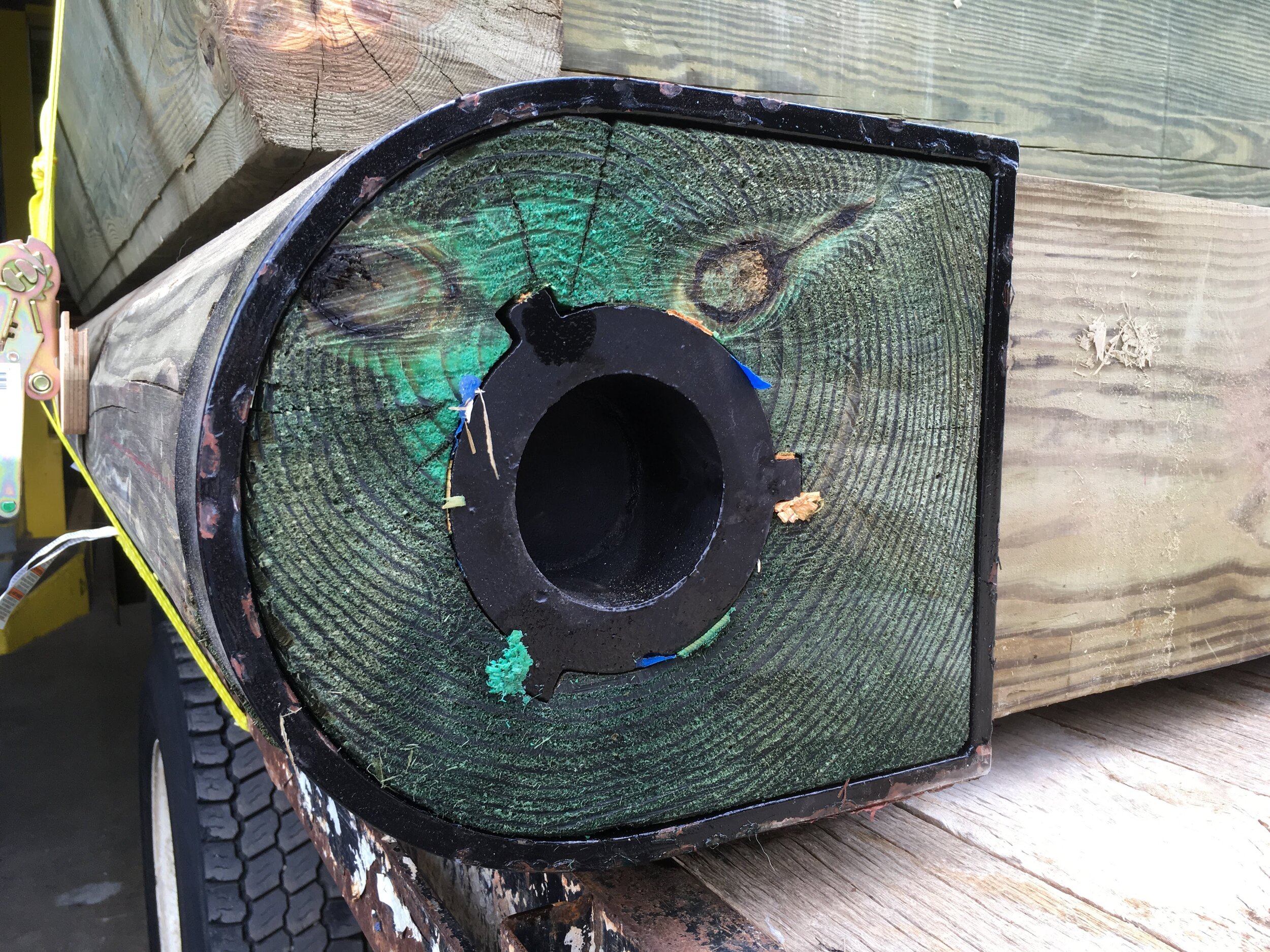C&O Canal Gates. Georgetown

This basic lock gate designed is a tried classic. Water pressure actually drives all joints tighter.

Used or not, the gates are punished in the canal. We are told this gate is from the 1980s.

These are parts from the Georgetown gates we replaced. The decay here is so advanced because these parts were not pressure-treated after fabrication. The modern farm grove pine has low natural resistance to decay.

Interesting here is the decay of the steel strap. The mild steel has nearly melted into the wood. The mild steel, in contrast to the cast iron, is far less durable in harsh conditions. It will flake away and become weak in its core.


We developed shop drawings off existing gates.

Four-inch deep, carbide-tipped band saw is used to resize this timber.

We fabricated this simple jig to make precise cuts with a chainsaw for the joinery.

Curious challenge to bring precision to large timbers and a chainsaw.

Unusual for a millwork shop to have the project components dwarf the dools.


Jigs, full-scale templates were key to precision.

Three generations of Amish leaning in hard to talk money.

Cattail Foundry in Lancaster, PA made the hardware for the canal gates from patterns provided by the National Park Service. The Foundry is used to making smaller pieces, but delivered beautiful larger castings for the canal gates.

Patterns for the hardware from Park Service were, but for one, perfect for the job.

These cast iron parts will outlast the wood components by 50 years. Old parts could have been used for this set of gates, but Park Service decided for all new.

Working with the Amish Foundry was very satisfying. They can readily do parts of this scale, custom, or otherwise. All of it from melted scrap iron.

This is a paint system we have come to now make a staple of our steel window work. National Park Service specified Sherwin-Williams, Acrolon and Macropoxy catalyzed primer and paint. Durable, high-bond, good sheen, all good, but can only be spray-applied.

A puzzle of components, these parts are ready for treatment. One can see here how post-fabrication treatment is critical for the parts’ protection.

Treated southern yellow pine at Culpeper Wood Preservers. The lighter colored center area of each 4x4 is the heartwood. Denser and no longer capable of capillary action it does not absorb the treatment, but for these same reasons is naturally resistant to decay.

Material enters the pressure chamber and remains there for four hours.

This is the holding vessel at Culpeper, the waterborne copper-base preservative travels from this tank to the pressure tank and back after each charge of wood.

For this project, all components were fabricated, fit, and assembled. Then, all taken apart, and sent back to Culpeper for pressure treatment.

The parts returned and needed no numbering. No two parts were the same. The final complexity was the gates’ taper from their pivot side to the mitered post. This was part of the original early 19th century design.

Upper lock gates are shorter, one less rail and a good bit more manageable.

Moe is a shop dog and the inspector. Here he gazes on quite a contraption.

Charles and Francisco built these gates and are happy to be finished. Hard, heavy, dangerous work.

This is it, all the weight of the gate rests here. The steel band is crucial to this pivot surviving.

Beautiful day for the installation on 30th Street.

The taller lower gates with hardware weighed over 2,500 pounds.

Plans are to once again run a boat on the canal from Georgetown to Harper’s Ferry. Canal walls were completely re-layed.

Installation for this job was handled by others. We never like this and wished to have been a part of this installation. These difficult one-off projects should be handled from shop drawings through installation by one resource. The work on this canal project, I think would have been better handled with a smaller team and more time. I look forward to a ride when they finish the canal.

